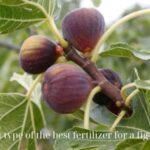Is Swiss chard a perennial? Swiss chard, a super-vitamin vegetable, is slowly making its way back into our gardens and onto our plates. With its colourful stems and unusually curly leaves, Swiss chard looks as good as it tastes.
Swiss chard (Beta vulgaris subsp. vulgaris var. flavescens or cicla) has been grown in Britain since at least 1596. Despite its long history in Britain and its cultivation in the Hanging Gardens of Babylon, Swiss chard is not as popular as it is today. But this leafy green is making a comeback, and rightly so, as Swiss chard is not only healthy and delicious, but also easy to grow and extremely decorative in the garden bed.
With tree02.com. Read on to find out how to successfully grow Swiss chard at home, including its origins, care, wintering and propagation.
Rainbow chard: origin and characteristics
Although it may not be immediately recognizable by its appearance, Swiss chard is a cultivated form of the radish (Beta vulgaris) and therefore belongs to the goosefoot family (Chenopodiaceae). Close relatives of Swiss chard include, for example, the beet (Beta vulgaris subsp. vulgaris var. conditiva) and the beetroot (Beta vulgaris subsp. vulgaris var. altissima). This vitamin-rich vegetable goes by many names including Swiss chard, rainbow chard, silver beet, beet spinach, beet kale and leaf beet. It grows long-stemmed leaves that can grow up to 30 cm in length.
There are two main varieties. The first, the most common type, is the stemmed Swiss chard of the Flavescens group, which has thick, crisp stems that are white, red, orange, green or yellow. The leaves are large and dark green and are eaten with the stems.
Another variety of Swiss chard, Swiss chard, belongs to the Cicla genus, and is only edible in its leaves. Once harvested, it grows back and can be cut again. Swiss chard is an ancient, useful plant that originated in the Middle East. It quickly spread throughout the Mediterranean region, where the ancient Greeks and Romans appreciated it not only for its delicious taste but also for its medicinal properties.
For example, it was used to treat digestive problems and anemia. It is starting to find its way back into our vegetable and ornamental gardens and can be used in a variety of ways in the kitchen. Even the ancient Greeks and Romans valued Swiss chard as a medicinal plant and in the kitchen
Is swiss chard a perennial?
Swiss chard is a biennial plant that usually only flowers in its second year. It grows as a basal rosette in its first year and bears leaves with stalks up to 30 cm long. Depending on the variety, the leaves and stems can be of different colours and shapes. Swiss chard flowers appear in its second year and are green and quite inconspicuous, growing on 1 cm long stems. The seeds are arranged in clusters of two to five seeds each. Varieties sown very early may flower and flower in their first year.
Rainbow chard vegetables
Spinach (Spinacia oleracea) is considered the best substitute for Swiss chard. The two vegetables have a very similar flavor and preparation. Another option is bok choy (Brassica rapa subsp. chinensis), which is related to Chinese cabbage (Brassica rapa subsp. pekinensis), and also has a similar flavor to Swiss chard. Swiss chard can also be substituted with beets and turnips. These are closely related to Swiss chard but have an earthier flavor. Note that these vegetables are not good companion plants for Swiss chard. Learn which plants make great companion plants for Swiss chard in our other article.
Caring for Rainbow Chard: The Secret to a Healthy Vegetable Garden
Rainbow chard, with its vibrant colors and attractive shape, is not only a beautiful ornamental plant but also a nutritious vegetable. To ensure that rainbow chard grows strongly and stays lush, proper care is extremely important.
Soil and light
Rainbow chard prefers deep, humus-rich, well-drained soil, and grows best in areas with light ranging from full sun to semi-shade. Choosing an ideal planting location helps rainbow chard grow quickly and is less susceptible to pests and diseases.
Watering and fertilizing
Rainbow chard needs a steady amount of water to keep the soil moist, so regular watering is very important. When watering, pay attention to keeping the soil moist but not waterlogged. In addition, the plant also needs to be fertilized periodically, giving priority to using organic fertilizers or slow-release fertilizers to provide the nutrients necessary for growth.

Mulching
An important tip to protect your chard from drought is to mulch the base of the plant with hay or leaves. This will not only keep the soil moist, but will also help to limit the growth of weeds, allowing the chard to concentrate its nutrients on the leaves and stems.
Tilling
Regularly till the soil around your chard to keep the soil loose and increase the plant’s ability to provide nutrients. Tilling also helps to remove unwanted weeds, ensuring that your chard has enough space to grow.
Preventing Diseases and Pests
Ribbon chard can be affected by a number of diseases, such as powdery mildew, downy mildew, and fungal leaf spots. To avoid this, make sure that there is enough space between plants to allow good air circulation, allowing the leaves to dry quickly after watering. In addition, some pests, such as aphids and brown-eyed butterflies, can damage the plant, so monitor regularly and treat promptly.
Overwintering Care
Rainbow chard can survive the winter and will sprout again the following year. To protect the plant from heavy frost, you should cut back the leaves and cover the plant with mulch or straw in the fall. Potted chard should also be covered to avoid damage from cold weather.
Harvesting and Storing Seeds
If you want to collect chard seeds, stop harvesting in mid-June and allow the plant to flower. When the seeds are ripe, they can be harvested and stored in a cool, dry place for use in the next growing season.
Conclusion
Swiss chard is generally considered a biennial rather than a perennial. Although it typically completes its life cycle in two years, it can act as a perennial in some temperate climates, returning for multiple seasons if protected from frost and extreme weather conditions.
With proper care, such as mulching and regular maintenance, gardeners in warmer regions can harvest the same chard plant over and over again. However, in colder climates, Swiss chard is generally considered an annual or biennial, requiring new plantings each season for optimal yields.






